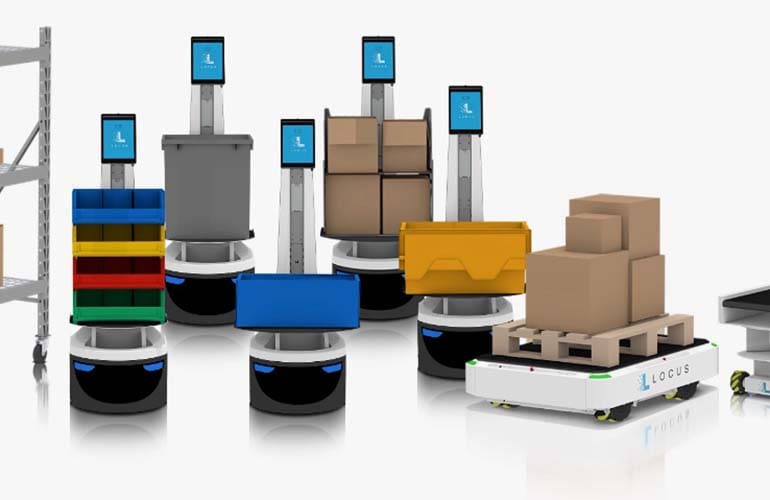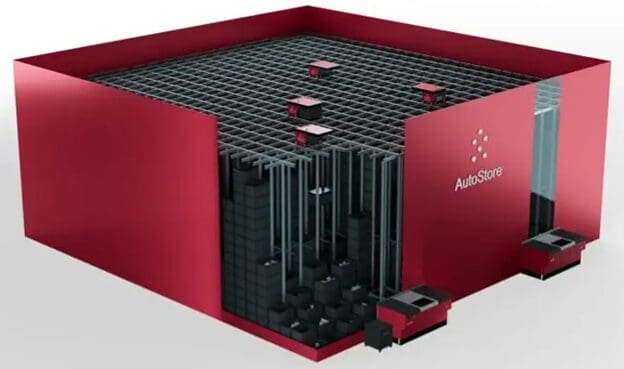 MODEX is the leading trade show for supply chain, logistics, and material handling solutions in North America. It showcases the latest products, technologies, and services from over 900 exhibitors across various sectors and industries. MODEX 2024, held in Atlanta, Georgia, from March 11 to 14, attracted more than 35,000 attendees and featured over 150 educational sessions, keynote speakers, and networking events.
MODEX is the leading trade show for supply chain, logistics, and material handling solutions in North America. It showcases the latest products, technologies, and services from over 900 exhibitors across various sectors and industries. MODEX 2024, held in Atlanta, Georgia, from March 11 to 14, attracted more than 35,000 attendees and featured over 150 educational sessions, keynote speakers, and networking events.
One of the main themes of MODEX 2024 was the prominent role of robots in the supply chain. From autonomous mobile robots (AMRs) to collaborative robots (cobots) to industrial robots, robots are transforming the way goods are moved, stored, picked, packed, and shipped. Robots offer many benefits for supply chain operations, such as increased efficiency, productivity, accuracy, safety, and flexibility. They can also work alongside humans or independently, depending on the task and the environment.
Examples of Supply Chain Robots at MODEX 2024
Several exhibitors at MODEX 2024 showcased their innovative solutions for supply chain robotics, demonstrating the diversity and potential of this field. Here are some of the examples that caught our attention.
Fetch Robotics
This solution consists of a fleet of robots that can navigate autonomously in a warehouse, using sensors, cameras, and lasers to avoid obstacles and collisions. The robots can perform various tasks, such as transporting goods, picking orders, sorting items, and replenishing inventory. The robots can also communicate with each other and with a cloud-based software platform that coordinates and optimizes their movements and actions.


RightHand Robotics
This solution uses a robotic arm equipped with a gripper and a vision system that can identify, locate, and grasp various types of items from shelves, bins, or conveyors. The robot can handle items of different shapes, sizes, weights, and materials, and can place them in the desired location or container. The robot can also learn from its own experience and from feedback from other robots, improving its accuracy and speed over time.
The Impact of Artificial Intelligence and Machine Learning on Supply Chain Robotics
Another trend that emerged at MODEX 2024 was the impact of artificial intelligence (AI) and machine learning (ML) on supply chain robotics. AI and ML enable robots to learn from data, adapt to changing conditions, and optimize their performance. They also allow robots to communicate with each other and with other systems, creating a more connected and intelligent supply chain. Some of the applications of AI and ML in supply chain robotics include vision systems, natural language processing, predictive analytics, and reinforcement learning.
Vision Systems
Vision systems are AI-powered systems that enable robots to perceive and understand their surroundings, using cameras, sensors, and algorithms. Vision systems can help robots to recognize objects, faces, barcodes, labels, and other features, and to perform tasks such as picking, sorting, inspecting, and scanning. Vision systems can also help robots to avoid obstacles and navigate in complex environments.
Natural Language Processing
Natural language processing (NLP) is a branch of AI that enables robots to understand and generate natural language, such as speech and text. NLP can help robots to interact with humans, using voice commands, chatbots, or conversational agents. NLP can also help robots to access and process information from various sources, such as manuals, databases, or websites.
Predictive Analytics
Predictive analytics is the use of AI and ML to analyze data and make predictions about future outcomes, events, or behaviors. Predictive analytics can help robots to optimize their operations, such as scheduling, routing, inventory management, and maintenance. Predictive analytics can also help robots to anticipate and prevent problems, such as breakdowns, errors, or accidents.
Reinforcement Learning
Reinforcement learning (RL) is a type of ML that enables robots to learn from their own actions and rewards, without explicit instructions or supervision. RL can help robots to improve their skills and performance, by experimenting with different actions and strategies, and learning from the feedback they receive. RL can also help robots to adapt to new or changing situations, by exploring and exploiting the best possible options.
A third trend that was evident at MODEX 2024 was the adoption of cloud and software as a service (SaaS) solutions for warehouse execution systems (WES). WES are software platforms that coordinate and optimize the activities of robots, humans, and other equipment in a warehouse. Cloud and SaaS solutions offer several advantages for WES, such as scalability, flexibility, accessibility, and cost-effectiveness. They also enable faster integration, deployment, and updates of WES, as well as better data management and analytics.
Locus Robotics
One of the examples of cloud and SaaS solutions for WES that were presented at MODEX 2024 was the Locus Robotics LocusOne platform. This solution is a cloud-based platform that manages and monitors the LocusBots, which are AMRs that can work collaboratively with humans to pick and pack orders in a warehouse. The LocusOne platform can assign tasks, track progress, optimize routes, and provide real-time data and insights on the performance and productivity of the LocusBots and the human workers.


A fourth trend that was highlighted at MODEX 2024 was the emergence of cubes as a way to maximize warehouse space and efficiency. Cubes are modular, stackable, and movable containers that can store and transport goods in a compact and organized manner. They can be used with robots, conveyors, or other systems to optimize the flow of goods in a warehouse. Cubes can also reduce labor costs, inventory levels, and energy consumption, as well as improve ergonomics and safety.
Example of Cubes at MODEX 2024
One of the examples of cubes that were demonstrated at MODEX 2024 was the AutoStore system. This system consists of a grid of cubes that can store various types of goods, and a network of robots that can retrieve and deliver the cubes to the desired location. The system can store up to four times more goods than a conventional warehouse, and can operate with high speed, accuracy, and reliability.


In conclusion, MODEX 2024 highlighted the latest innovations and developments in supply chain robotics, as well as the related fields of AI, ML, cloud, SaaS, and cubes. These trends indicate that robots are becoming more central, intelligent, and integrated in the supply chain, offering new opportunities and challenges for the industry.



















